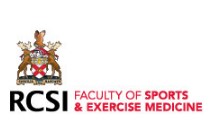Posterior Cruciate Ligament Injury
Posterior Cruciate Ligament Injury
What is the posterior cruciate ligament (PCL)?
The posterior cruciate ligament (PCL) is situated towards the back of the knee joint and similarly to the ACL spans the knee joint from femur to tibia. It is a bigger ligament than the ACL and appears to be much harder to tear.

Injury Incidence
Fortunately, very few PCL injuries are severe enough to warrant surgical treatments and the vast majority will do very well with structured rehabilitation. The PCL has an inherent ability to heal and this will usually still allow a return to high demand and contact sports.
Presentation
The PCL is seen injured in sport usually after a direct blow over the front of a flexed knee. This can occur in a heavy fall on hard ground or sometimes in a collision. The incident is often not quite as obvious as an injury to the ACL and an individual may often try to continue in the game. The knee afterwards is then sore and can swell to a variable degree but often this is not as immediately obvious when compared to an ACL tear.
Diagnosis
The history and clinical assessment will give a good idea about the possibility of a PCL tear but usually an MRI is used to investigate further and help formulate the appropriate treatment plan.
Treatment
Higher grade injuries may benefit from an initial period of protected weight bearing and a specifically fitted PCL injury brace. Depending on the severity of injury, the time out of sports can vary from 4 to 16 weeks with physiotherapy and strengthening the key to restore long term function.
Prognosis
The PCL can be injured in isolation or in combination with other knee supportive structures. If the injury pattern involves other ligaments too, this can lead to a much more unstable joint and may need consideration for surgery and PCL reconstruction.











